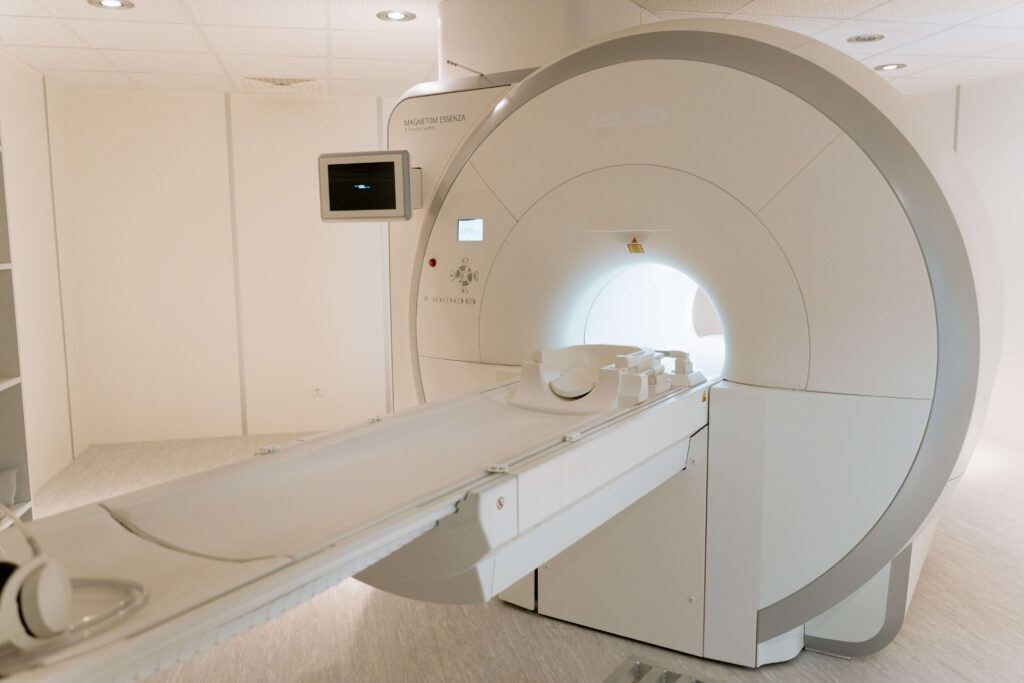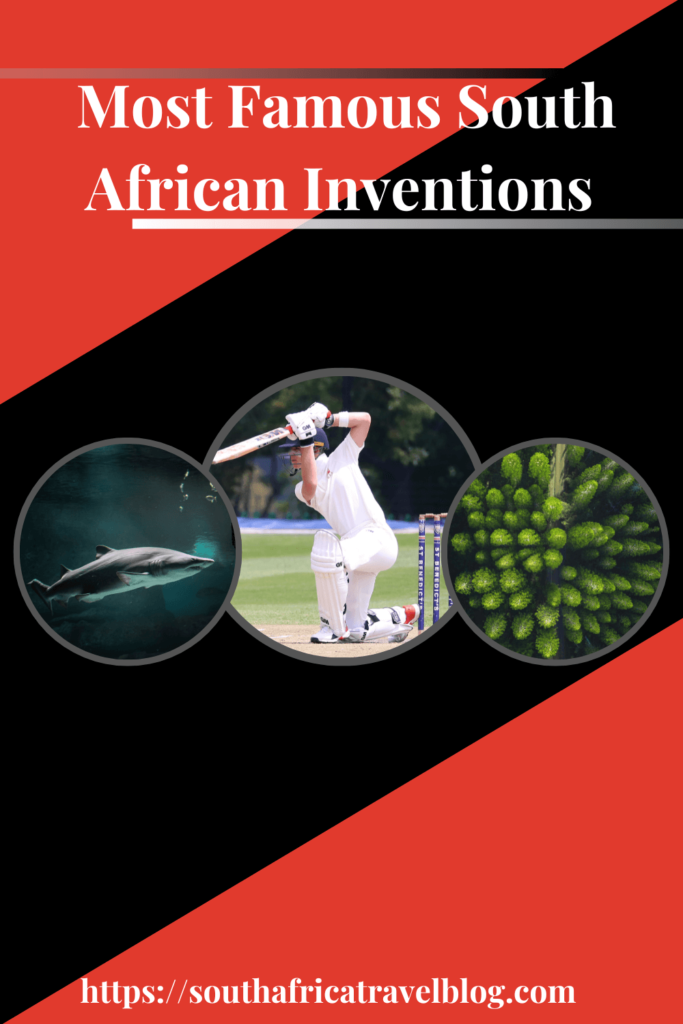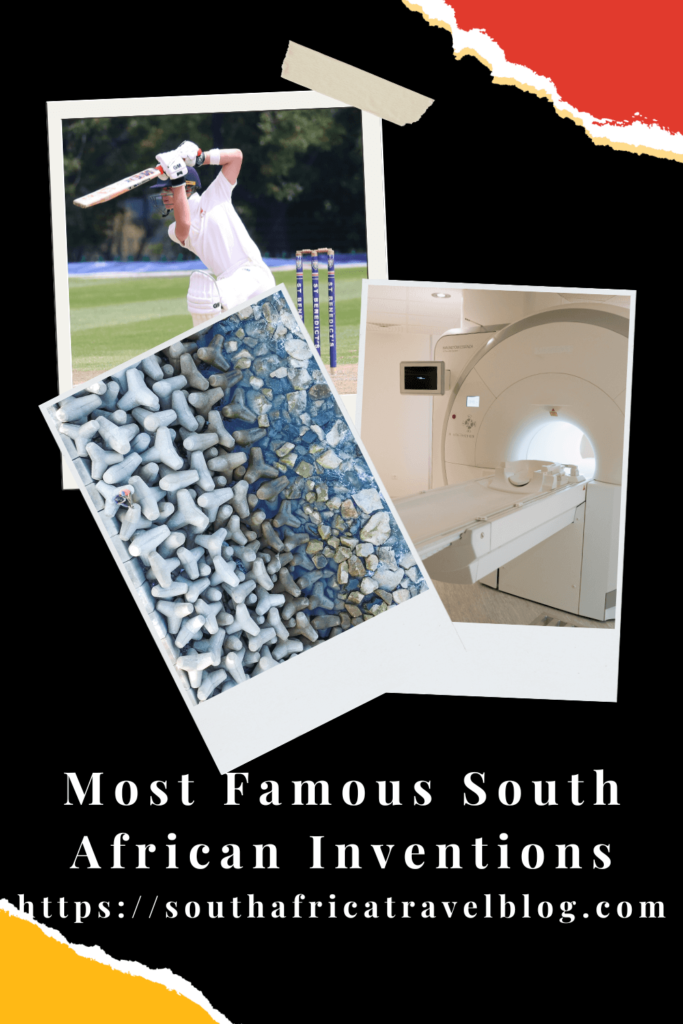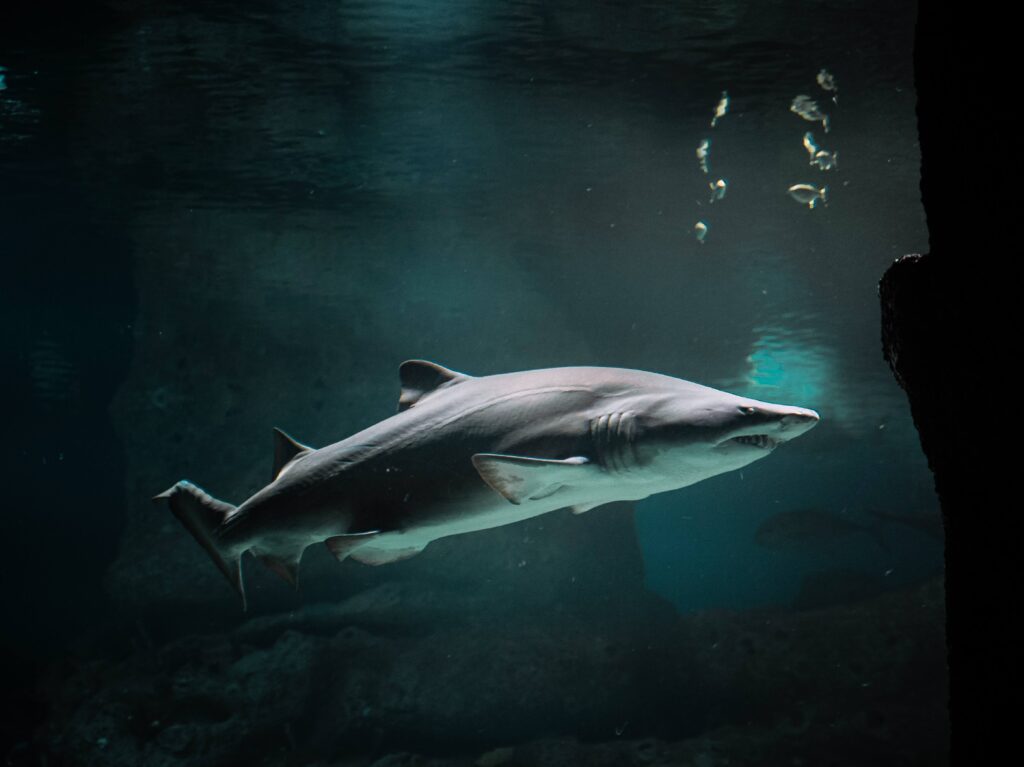South Africans are entrepreneurial and innovative. Many South African inventions were firsts in the world. In this article, let’s explore the most famous South African inventions from different fields, such as the medical, military, sports, and many others.
Most Famous South African Inventions
Here is the list of the most famous inventions by South Africans.
CAT Scan
While working with Godfrey Hounsfield, South African physicist Allan Cormack developed the computed axial tomography scan (CAT scan) at Tufts University. They won the 1979 Nobel Prize in Physiology or Medicine for their invention.

When he started a part-time role as a physicist at a hospital’s radiology department, Cormack became interested in the challenges of X-rays of soft tissues or layers of tissue with different densities. At the time, X-rays were two-dimensional and could not differentiate between these tissue types. Cormack showed in the 1960s how doctors could discover the details of a flat section of soft tissue from the measurements of the attenuation of X-rays passing through it from different angles. His mathematical method involved the rotation of electronic detectors and an X-ray source around the body to provide additional data for computer analysis. The result of this method was a map of the tissues within a cross-section of the body.
Getting Oil from Coal
South Africa has few oil sources. The government published a white paper in 1927. They recommended an investigation into establishing an oil-from-coal industry in South Africa to protect the country’s balance of payments against the increasing crude oil imports. The South African government established the South African Coal Oil and Gas Corporation (Sasol) 1in 1950 to focus on getting oil from coal. Sasol became the world’s first and largest oil-from-coal refinery, producing 40% of South Africa’s fuel.
In 1955, Sasol developed the first automotive fuel. In 1967, Assol constructed Natref (National Petroleum Refiners of South Africa). In 1990, Sasol created its first international marketing company, Sasol Chemicals Europe. Since then, Sasol has created world-class technology for converting low-grade coal into synfuels and chemicals.
Heart Transplant, One of The Most Famous South African Inventions
One of Dr Christiaan Barnard’s patients gave birth to a son with an unfixable heart problem. The boy’s death caused Dr Barnard to start researching heart disease, remedial heart surgery, and possibly replacing heart valves.
When Dr Chris Barnard worked with Professor Wagensteen in the US, who taught experimental surgery. Professor Wagensteen’s work led to a perfect-functioning heart-lung machine, which made cardiac surgery easier.
Dr Barnard successfully performed a kidney transplant in October 1967 on Edith Black at Cape Town’s Groote Schuur Hospital.
On 3 December 1967, Dr Barnard performed the world’s first heart transplant on Louis Washkansky, who suffered from heart failure. He was willing to take the risk of a heart transplant.
During his career, Dr Barnard performed ten more successful heart transplants. One of the patients survived for 23 years.
Read more about South Africa’s money and its official languages.
Power-Free Foetal Heart Monitor
A paediatrician from Cape Town, Dr Dave Woods, created the power-free and portable foetal heart monitor. He worked with a team from Freeplay Energy to develop a device that uses ultrasound to measure a foetus’ heart rate during labour. It also scans the womb and takes “pictures” of the foetus.
Monitoring a foetus’ heart rate during labour is essential as a slowing heart rate during contractions may indicate that the foetus is not getting enough oxygen, which can be fatal.
The device uses solar power, wind-up power, electricity or rechargeable batteries. It is small enough to be used anywhere.
Speed Gun
Henri Johnson from Somerset West created a speed gun in 1992 to measure the angle and speed of speeding items, such as tennis and cricket balls. Electronic Development House manufactured the device.

Johnson launched the speed gun at the 1999 Cricket World Cup. The device is available in the USA and Europe.
The speed gun sends a radio wave, which a ball in its path reflects back to it. The device then calculates the ball’s speed using the Doppler Shift principle.
One of the Most Famous South African Inventions: The Tellurometer
Wadley invented radio equipment, the Wadley Loop (a circuit for cancelling frequency drift) and the Tellurometer, which made him famous.
The Tellurometer measures distance.
The device is portable and very accurate. It measures the travel time of a radio wave from one transmitter to another with an accuracy of 3:1 000 000 over a range of 3 to 50 km.
Kreepy Krauly
Ferdinand Chauvier, a hydraulics engineer, came from the Belgian Congo to South Africa in 1951.
He invented the Kreepy Krauly in 1974 when he realised a large market for automating pool cleaning existed.
Kreepy Krauly‘s are used globally in swimming pools and work like a vacuum cleaner.
Pratley Putty
George Pratley, an engineer from Krugersdorp in South Africa’s Gauteng Province, invented Pratley’s Putty in the 1960s. He wanted a glue that could hold electrical components.
NASA used Pratley’s Putty to hold components of the Eagle landing craft of the Apollo XI mission together when it went to the moon in 1969.
You can buy Pratley’s Putty anywhere in the world.
Dolosse, Another of The Most Famous South African Inventions
Eric Merrifield developed dolos, which are large, uniquely shaped concrete blocks weighing up to 20 tons each. They aim to break waves to protect harbour walls, coastal properties, and installations.

East London Harbour was the first to use dolos, but countries worldwide use them now.
The Coega Project, an industrial development complex and deepwater port about 20 kilometres east of Port Elizabeth, made the biggest dolos in Africa. The dolos weighed several tons. The harbour of Ngqura’s two breakwaters uses these dolos.
South Africa has beautiful beaches. Find out about Cape Town’s best beaches.
Q20
Mr Robertson from Pinetown in the KwaZulu-Natal Province invented Q20 in 1950. He developed Q20 to displace water from an old VW Beetle’s distributor caps. VW Beetles stalled in rainy weather. Q20 repelled the water effectively, but they found it worked for many things, including preventing rus, easing squeaky door hinges and helping to loosen rusted or seized nuts and bolts.
Mr Robertson called it Q20 when he told his neighbour that the product provided 20 answers to 20 questions.
Q20 weighs more than water. Q20’s gravity is 1.154, more than water’s gravity of 1. Once you spray Q20 on water, it sinks to the bottom and repels water from the area. Buy Q20 here.
Retinal Cryoprobe
A specialist in retinal disease, Selig Percy Amoils, developed a new procedure for cataract surgery at the Baragwanath Hospital in Soweto. Amoils received a Queen’s Award for Technological Innovation in 1975.
Smartlock Safety Syringe
William Blake, Paul Lambourn, Jose Loureiro, Michael Moore, David Shiel, Mirko Tappero, Henk van der Meyden and Alexis Wadma were students at the Vaal University of Technology in South Africa when they invented the Smartlock safety syringe. These syringes provide additional protection against nurses, doctors and patients getting stuck by needles accidentally, possibly leading to injury and contamination from the Ebola virus, Hepatitis and HIV. This invention has saved many lives.


Economical Solar Power
A University of Johannesburg Physicist, Professor Vivian Alberts, created a solar power technology that uses a micro-thin metallic film. This invention provides cheaper solar electricity in South Africa.
Computerised Ticketing
Percy Tucker from Benoni invented the first computerised, centralised ticket booking system in 1971. This invention meant people no longer had to queue in person for cheaper tickets. The invention resulted in the establishment of Computicket. Other clients, such as Ster-Kinekor, started using the booking system, which many countries globally use now.
Cybertracker
One of South Africa’s physicists, Louis Liebenberg, and computer scientist, Lindsay Steventon, invented software with an image-based interface to track animal behaviour. The software helped animal trackers who can’t read or write. The software was the first of its kind in the world. The visual interface allows non-literate trackers to record complex geo-referenced animal behaviour observations.
CyberTracker has been a critical tool for animal conservation. Countries have used it to monitor gorillas in the Congo, jaguars in Costa Rica, butterflies in Switzerland, snow leopards in the Himalayas, the Sumatran rhino in Borneo, birds in the Amazon, dolphins in California, wild horses in Mongolia, whales in Antarctica and marine turtles in the Pacific.
Playpump
Ronnie Stuiver, from Delmas in the Mpumalanga Province, adapted a children’s merry-go-round to a water-pumping tool in rural areas. It allows children to pump water while playing on the merry-go-round.
Many African countries are now using PlayPumps.
Hippo Water Roller
Pettie Petzer and Johan Jonker invented the Aqua Roller in 1991 to make life easier for rural people who don’t have access to nearby sources of clean water. The Hippo Water Roller allows these people to get water quickly and easily.
They renamed the Aqua Roller to the Hippo Water Roller in 1993.
The Hippo Water Roller is a solid plastic drum. It is easy to roll it when it is full of water (90 litres). There is no need to carry the Roller.
Greathead Shield
James Henry Greathead was born in Graham’s Town in 1820. He finished his schooling in Graham’s Town and Cape Town. In 1864, he moved to Britain to complete his education.
He worked a three-year pupillage with Peter Barlow, a civil engineer. During the pupillage, he learned about the tunnelling shield system.
Greathead and Barlow started to design the Tower Subway under the River Thames in 1869.
Greathead’s circular tunnelling shield comprised an iron cylinder with screw jacks to help it move forward. The shield inches forward while excavating the working face, leaving behind a permanent tunnel lining of cast iron segments.
Electric Game-Drive Vehicles
Japie Van Niekerk, owner of the Cheetah Plains Private Reserve, realised that an electric golf cart was quieter than the diesel engines of the Safari vehicles they used.
He created electric game-drive vehicles to allow them to get visitors closer to wild animals when on Safari.
The vehicles can go 50km with the power provided by Tesla batteries. They also offer USB charging stations and heated seats.
Pelebox
Neo Hutiri, an engineer, created the Pelebox in 2014. He was diagnosed with Tuberculosis (TB). To get his monthly medication from his local clinic in Bophelong in Vanderbijlpark, he sometimes had to wait up to 3 hours.
The Pelebox is a smart locker patients use for collecting their chronic medication. They no longer have to queue at a pharmacy or clinic since they receive a one-time PIN on their phones to open the locker with their medicine.
The concept won the Royal Academy of Engineering’s 2019 Africa Prize for Engineering Innovation. With this prize, Hutiri became the first South African medal winner.
A Tree-Planting Drone
Andries Louw, a South African, and Andrew Walker, an Australian, invented a pneumatic firing module to shoot seeds into the soil from a drone.

They called the module the Podder. You attach the module to the bottom of a drone. With this module and a drone, two people with two drones can plant as many as 40,000 seeds a day.
The two founded a company called AirSeed Technologies with their invention.
Shorts Made from Plastic
A Cape Town-based clothing brand, GiLo Lifestyle, found a way to use discarded plastic bottles to make ethical and sustainable boardshorts.
They use 20 plastic bottles to make one pair of shorts. The shorts are water-resistant and dries quickly. They are also seamless on the inner thigh, which prevents chafing.
A Revolutionary Beach Bat
Richard Goldstein, the founder of Absolute Pets, used his hobby to develop a new type of beach bat.
The Boomer beach bats are popular in France, Australia, Germany, the United States and the United Kingdom.
The bats are unique since they have a hole to reduce the resistance to wind when swinging the bat.
They use sustainably sourced woods of different strengths to make the bats. The wood is combined to give the bat flex and power.
A Bag that Cooks Food without Electricity
Sarah Collins created the Wonderbag in 2008. She wanted to give South Africans a solution to cooking without power when there was load shedding. It is also perfect for families who cannot afford the high cost of electricity.
A Wonderbag is a heavily insulated container that slow-cooks food for up to 12 hours once the pot is hot. It uses no further electricity during the cooking process.
Cobb Cooker
Ken Hall, an industrial designer, invented the Cobb Cooker. He designed it as a safer alternative to dangerous paraffin stoves, which rural communities in South Africa often use where there is no electricity.
The prototype was ceramic and heavy. The initial version used dry corn cobs as fuel. They refined the design, and it is now a tiny, portable and efficient cooking tool. It now uses compressed charcoal briquettes as fuel.
DryBath
Ludwick Marishane, a high school student, invented DryBath. DryBath is a gell that can clean you when you don’t have access to water.
The Solar Turtle
An engineer, James van der Walt, developed the Solar Turtle. It is a shipping container that provides 3 kilowatts of green energy. It can also protect itself within 46 seconds.
These containers can provide communities in townships or rural areas with power.
Bright Pink Rescue Buoys
South Africa’s National Sea Rescue Institute (NSRI) created bright pink buoys to reduce the risk of bystander-rescue drownings.
South Africa has a long coastline, which is challenging to monitor and guard continuously. They mount the rescue buoy on a large board with instructions for bystanders to use when they spot someone drowning in the ocean.
Since the NSRI implemented these devices, it has saved several lives.
Visit uShaka Marine World to learn more about a variety of sea animals.
VR Training to Test for A Fear of Heights
The augmented and reality design company Sea Monster designed the Heights VR experience to help ArcelorMittal South Africa, the largest steel producer in Africa, train workers, who work at heights of up to 190 metres above ground, on their steel plant in Vanderbijlpark.
This virtual reality system tests whether someone can handle heights without them even leaving the ground.
Magnetic-Field Shark Barriers
Lindsay Lyon, an inventor, with former World Surf Champion, Tom Carroll, invented the shark shield. A South African start-up, SharkSafe Barrier, built the shark barrier.
The barrier’s tubes contain strong magnets and biomimics, a kelp forest, to deter sharks visually.

Sharks can detect magnetic fields with their sensory organs.
The shark barrier is a portable electronic device. It emits an electromagnetic field.
Water enthusiasts use the barrier in spearfishing, scuba diving, ocean kayak fishing and surfing.
MeerKAT and SKA
They built the MeerKAT telescope to look at the stars and the cosmos. It has provided scientists with valuable images, including one of a massive black hole in the middle of the Milky Way.
The Square Kilometre Array (SKA) will eventually absorb the telescope to become the largest radio telescope on Earth. It will include many dishes on the African continent and antennas in Australia.
The Penis Transplant
South African doctors from the Tygerberg Hospital in Cape Town and the University of Stellenbosch were the first to do a penis transplant in 2014 successfully. A young boy had a problematic circumcision that required his penis to be amputated.
Military Inventions: Casspir and Rooivalk
South Africa created the first military attack helicopter (Denel Rooivalk) to make a 360-degree loop. They also created the Casspir, a mine-resistant military personnel vehicle.
Blaster
Charl Fourie invented the Blaster in 1998. The Blaster is a flame thrower to protect South Africans against hijackings.
Flightscope
Henri Johnson invented the Flightshcope in 1989. It is a radar system pro golfers can use to analyse their recorded trajectory, launch angle, speed and direction.
The Urine Brick
Suzanne Lambert, a student at the University of Cape Town’s Department of Civil Engineering, created the urine brick.
A natural process called microbial carbonate precipitation creates bio-bricks by mixing urine, sand and bacteria.
When the bricks dry at room temperature for a few days, they lose the ammonia smell. It takes 30 litres of urine to create one brick.
These bricks can contribute to sustainable construction in the future.
Revolution Project
Graeme Murray, an inventor and cyclist, developed a racing bicycle called the Revolution Project. The bicycle has a carbon Nomex honeycomb and balsa core. It is lightweight and adjustable, with even the fork and handlebar adjustable to the rider’s size and preferences.
Murray also created the Orthoped Bicycle Saddle to consider the differences between male and female riders.
Four-Way Fin System
From Cape Town, Dean Geraghty invented the Four-Way Fin System for surfboards in 2001.
The four-way system allows the surfer to adjust the angle and position of the fins based on the surfboard’s hydrodynamics, the surfer’s stand, and the surf conditions.
Internet Security System
Mark Shuttleworth started an Internet security business after he graduated from the University of Cape Town in 1995.
He sold the Thawte Internet security system to VeriSign in 2000.
Shuttleworth also started the Ubuntu Project, a Linux-based operating system globally available for desktops and servers.
Viböl Exhaust Vibration Balancer
A Capetonian, Jacobus Cronje, invented the Viböl Exhaust Vibration Balancer in 1996. The Balancer monitors movements in an exhaust system to reduce fuel bills and breakages.
Cronje developed the Balancr when his customers wanted something better than the standard flexible joint that cracks often.
The Viböl Balancers are now used globally in ships, trucks, and diesel generators.
Sources
South African inventions
Top 10 South African inventions
List of South African inventions and discoveries
10 World-First Innovations you probably didn’t know were invented by South Africans
These were some of the most exciting South African inventions over the past decade
10 South African innovations and inventions that we can be proud of
